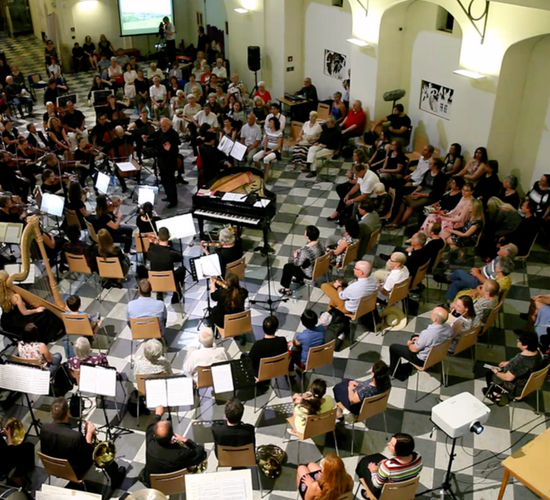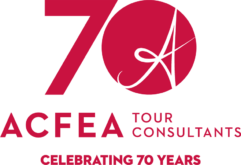Stratus Chamber Orchestra’s immersive concert brought musicians and audience together in ways that neither may have anticipated — and left them with a new understanding of how a classical music concert could make them feel.

While on tour to the Czech Republic in 2017, the Stratus Chamber Orchestra, based in Denver, Colorado, performed at Prague’s Czech Museum of Music, as part of the American Spring Festival and the inaugural Prague Multicultural Music Project. For this special concert, the 20 orchestra members sat side by side with musicians from the Czech Republic, Iraq, China, New Zealand, South Africa, and Germany, and the program featured music by Czech and American composers, some of which were conducted by Stratus Chamber Orchestra’s director David Rutherford, and others by Indian-born Czech resident Debashish Chaudhuri. All of this deeply resonated with the Project’s themes of East Meets West and the coming together of people of different cultures.
One major element of surprise was the non-traditional staging. Audience members sat among the musicians, so that everyone present was hearing, seeing, and experiencing the concert. “There was an older Czech couple close by me. By their smiles I could tell they were enjoying being close,” said violinist Lois Owsley.
While some were hesitant about this unorthodox setup, “their minds and hearts were changed,” Rutherford observed. “Our approach to music making in an interactive and immersive format changes all the regular dynamics of how musicians see each other, work together, and relate to the audience.”
The immersion went beyond the seating arrangement. The final piece on the program, “Mosi-oa-tunya”, written by American composer David Mullikin for orchestra, called for audience participation in the form of body percussion and the jangling of keys. Tour participant Judi Buehrer shared that “the people around me shook their keys vigorously and slapped their knees on cue, with big smiles on their faces. One tiny elderly woman in the audience participated joyfully, shaking a set of keys with all her might.”
After the concert, Czech people in the audience asked, “How did you know about the keys?” They turned out to be more than uncommon percussion instruments; the keys were an important link to Czech history. During the Velvet Revolution of 1989, Czech people jangled their keys to express freedom from communist regime.
As David Rutherford remarked, “The significance of the keys is still a part of the cultural fabric in the Czech Republic. We couldn’t have planned a more ingratiating piece to play for Czech audiences, and wherever we played it, they relished it!”
—
Photo by Paul Cronley/Merlin Productions

